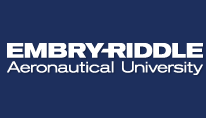T1-A: Use of Instructional Videos to Enhance the Learning Objectives of the Thermal Fluids Laboratory
Start Date
5-3-2018 10:00 AM
Description
The Mechanical Engineering (ME) Department at Mississippi State University has recently renovated the Thermal Fluids Laboratory (TFL). In addition to adding new equipment, new instructional techniques have been implemented in the thermal-fluids laboratory course. One of these techniques is the use of Quick Response codes on each piece of equipment that demonstrates the experiment in a tutorial video hosted on a YouTube channel for the course. Due to the large enrollment in the ME department, multiple sections of the TFL have to be scheduled every semester. This innovative technique is designed to enhance students’ learning experience, streamline course instruction to ensure consistency across multiple sections, and assist in meeting ABET course standardization requirements. Also, the implementation of this technique allows instructors to oversee multiple experiments at once while allowing different groups to get hands-on experience with their experiment, which is one of the critical components that need to be emphasized in the lab experience.
T1-A: Use of Instructional Videos to Enhance the Learning Objectives of the Thermal Fluids Laboratory
The Mechanical Engineering (ME) Department at Mississippi State University has recently renovated the Thermal Fluids Laboratory (TFL). In addition to adding new equipment, new instructional techniques have been implemented in the thermal-fluids laboratory course. One of these techniques is the use of Quick Response codes on each piece of equipment that demonstrates the experiment in a tutorial video hosted on a YouTube channel for the course. Due to the large enrollment in the ME department, multiple sections of the TFL have to be scheduled every semester. This innovative technique is designed to enhance students’ learning experience, streamline course instruction to ensure consistency across multiple sections, and assist in meeting ABET course standardization requirements. Also, the implementation of this technique allows instructors to oversee multiple experiments at once while allowing different groups to get hands-on experience with their experiment, which is one of the critical components that need to be emphasized in the lab experience.


